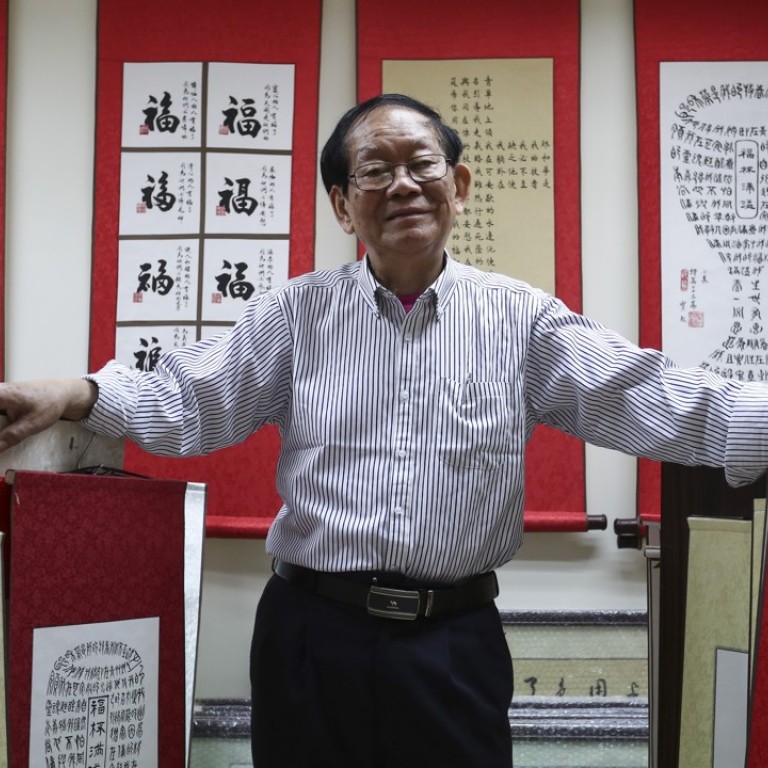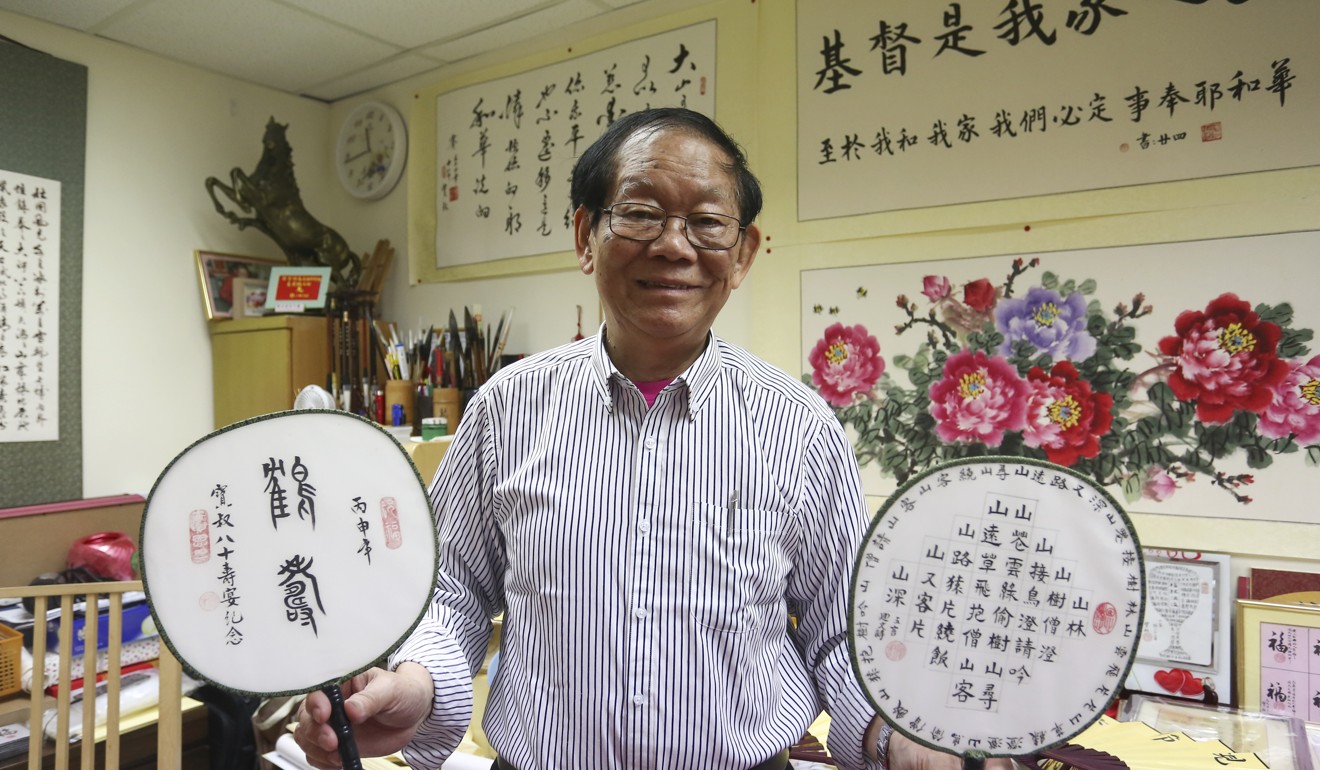
From killer to calligrapher, a Hong Kong artist’s dark journey
He’s the picture of respectability now, but in the 1970s Lam Po once killed a man in a prison brawl and was twice sentenced to death
Lam Po picks up a brush filled with black ink and writes four Chinese characters that mean dignity and honour on a white banner. It’s hard to associate the 81-year-old calligrapher with anything related to murder.
But the father of two sons and a daughter spent over three decades in jail in Hong Kong during the 1970s after being convicted of conspiracy to commit murder and then murder. He was twice sentenced to death, with the terms later commuted to life imprisonment.
In 1994, the city’s last governor, Chris Patten, granted him clemency for good behaviour.

His first conviction took place in his mid-30s when a group of friends offered to help him get his money back from a debtor of his electronic appliances business. The debt collection turned sour and eventually the debtor was killed.
Lam was regarded as the mastermind behind the murder and, aged 35, he was sentenced to death. His youngest son was six months old at the time.
I went crazy. I took over his knife and pushed him to the floor. He never got up again
“I never thought of hurting anyone. I was just very concerned about the money and happy someone would help claim the money back for me,” Lam said. “I felt hopeless when the judge handed down the sentence.”
Capital punishment in Hong Kong was abolished in 1993, although the last execution was carried out in 1966, when a convict was hanged at the maximum security Stanley Prison. Since the last execution, the governor would routinely commute death penalties to life imprisonment.
After spending a year in a condemned cell, Lam’s sentence was commuted to 30 years in jail and he was transferred to a common cell.
Just when he could see a silver lining, he found trouble again, got into a brawl that ended in an inmate being killed and received another death sentence.
It all started with a fight between prisoners. Lam said he had been bullied by other inmates since being transferred to the common cell and on that fateful day he had received disturbing news from outside.
“My relatives came to visit me and told me that my wife was robbed on her pay day. She tried to save the few hundred dollars from the robber and got stabbed.”

After a two-day trial during which Lam insisted on defending himself rather using a lawyer, he was sentenced to death, which again was commuted to life in jail.
He was transferred to Siu Lam Psychiatric Centre, where he spent the next 18 years in a tiny room, although there was no medical proof of his psychiatric condition.
“I told the court how I got bullied in prison. The officials thought I was bad-mouthing them.”
During his time there, Lam tried to enjoy the 30 minutes a day when he was allowed to walk in the garden. He also picked up calligraphy from a teacher to kill time.
I want to tell people that they have to think twice. Not everyone can be as lucky as me and have a second life
In 1992, a review found that Lam was actually mentally stable and he was transferred to Shek Pik Prison. Two years later he got an early release, helped by a donation of about HK$2,000 in prison earnings to a boy he read about who needed to go to Australia for costly surgery.
On June 27, 1994, Lam was finally a free man.
“I was thinking a lot when I got out. I was thinking what my future was going to be and how society had changed in the past three decades,” he said.
Now, the calligrapher also known as Uncle Po sells his art works for a living and in his spare time shares his dramatic life story with Christian groups and young people.
“I want to tell people that they have to think twice. Not everyone can be as lucky as me and have a second life,” he said.
His biggest regret is his failure to connect with his youngest son, who now lives a few blocks away from Lam’s calligraphy studio and barely talks to his father.
“I guess, since he is married and has his own family, it’s not really important to have me besides him. Also because I went to jail when he was only a baby and did not know how to get along with him,” Lam lamented.
“It’s understandable. We can have our own life. I just want to wish him all the best.”

